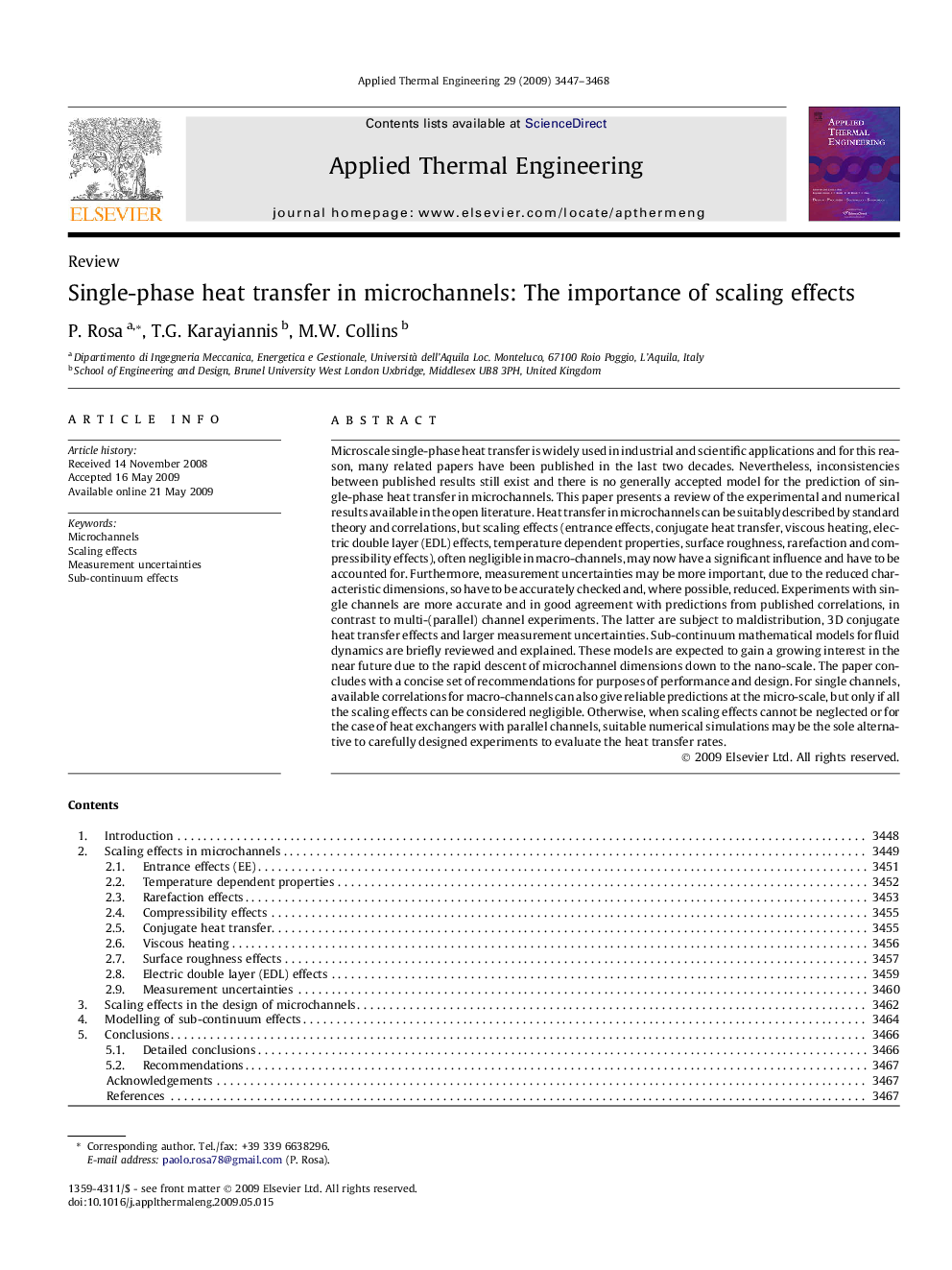| Article ID | Journal | Published Year | Pages | File Type |
|---|---|---|---|---|
| 648275 | Applied Thermal Engineering | 2009 | 22 Pages |
Microscale single-phase heat transfer is widely used in industrial and scientific applications and for this reason, many related papers have been published in the last two decades. Nevertheless, inconsistencies between published results still exist and there is no generally accepted model for the prediction of single-phase heat transfer in microchannels. This paper presents a review of the experimental and numerical results available in the open literature. Heat transfer in microchannels can be suitably described by standard theory and correlations, but scaling effects (entrance effects, conjugate heat transfer, viscous heating, electric double layer (EDL) effects, temperature dependent properties, surface roughness, rarefaction and compressibility effects), often negligible in macro-channels, may now have a significant influence and have to be accounted for. Furthermore, measurement uncertainties may be more important, due to the reduced characteristic dimensions, so have to be accurately checked and, where possible, reduced. Experiments with single channels are more accurate and in good agreement with predictions from published correlations, in contrast to multi-(parallel) channel experiments. The latter are subject to maldistribution, 3D conjugate heat transfer effects and larger measurement uncertainties. Sub-continuum mathematical models for fluid dynamics are briefly reviewed and explained. These models are expected to gain a growing interest in the near future due to the rapid descent of microchannel dimensions down to the nano-scale. The paper concludes with a concise set of recommendations for purposes of performance and design. For single channels, available correlations for macro-channels can also give reliable predictions at the micro-scale, but only if all the scaling effects can be considered negligible. Otherwise, when scaling effects cannot be neglected or for the case of heat exchangers with parallel channels, suitable numerical simulations may be the sole alternative to carefully designed experiments to evaluate the heat transfer rates.
